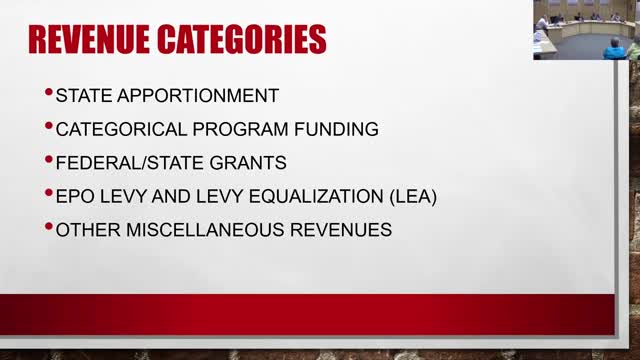District faces $10 million budget cuts amid rising costs
August 15, 2024 | Yelm Community Schools, School Districts, Washington

This article was created by AI summarizing key points discussed. AI makes mistakes, so for full details and context, please refer to the video of the full meeting. Please report any errors so we can fix them. Report an error »

In a recent government meeting, officials discussed the budget for the upcoming fiscal year, revealing significant challenges ahead due to a projected revenue shortfall. The budget analysis highlighted a reduction in local tax revenues, specifically a decrease of $7.8 million, attributed to changes in levy funding. This reduction is part of a broader financial landscape where total cuts to staffing and programs amount to approximately $10.2 million, yet only $3.3 million in actual expenditure reductions are anticipated.
The budget breakdown indicated that state apportionment funding remains stable, while federal program funding has seen minimal changes. However, the absence of carryover funds from the Elementary and Secondary School Emergency Relief (ESSER) program is a notable concern, as it will impact available resources for the next year.
Expenditures are projected to increase by $7 million, driven by rising costs in salaries, benefits, and essential supplies, including food and fuel. The meeting underscored the necessity for stringent monitoring of spending, with officials emphasizing a commitment to scrutinizing all purchases and travel requests to mitigate further financial strain.
In response to the budgetary constraints, various staffing cuts have been proposed, including reductions in administrative positions and paraeducators, which are expected to save approximately $2.3 million. Non-salary related cuts are also on the table, with a total of around $2 million identified in areas such as technology refreshes and building budgets.
Officials acknowledged the uncertainty surrounding future enrollment numbers, which could influence funding. They are preparing for potential further cuts in the next fiscal year, depending on the outcome of a levy vote scheduled for February. The meeting concluded with a commitment to ongoing financial oversight and the development of strategies to replenish the district's depleted fund balance.
The budget breakdown indicated that state apportionment funding remains stable, while federal program funding has seen minimal changes. However, the absence of carryover funds from the Elementary and Secondary School Emergency Relief (ESSER) program is a notable concern, as it will impact available resources for the next year.
Expenditures are projected to increase by $7 million, driven by rising costs in salaries, benefits, and essential supplies, including food and fuel. The meeting underscored the necessity for stringent monitoring of spending, with officials emphasizing a commitment to scrutinizing all purchases and travel requests to mitigate further financial strain.
In response to the budgetary constraints, various staffing cuts have been proposed, including reductions in administrative positions and paraeducators, which are expected to save approximately $2.3 million. Non-salary related cuts are also on the table, with a total of around $2 million identified in areas such as technology refreshes and building budgets.
Officials acknowledged the uncertainty surrounding future enrollment numbers, which could influence funding. They are preparing for potential further cuts in the next fiscal year, depending on the outcome of a levy vote scheduled for February. The meeting concluded with a commitment to ongoing financial oversight and the development of strategies to replenish the district's depleted fund balance.
View full meeting
This article is based on a recent meeting—watch the full video and explore the complete transcript for deeper insights into the discussion.
View full meeting
